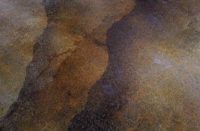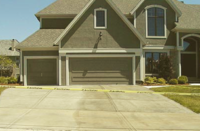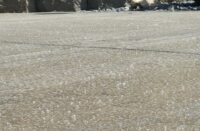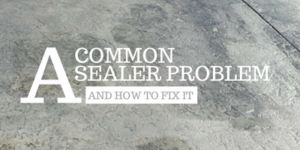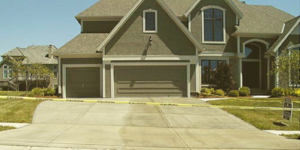Lately I have been asking myself questions about why we do what we do concerning decorative concrete work. I kind of feel like sealing may be one of those things we do in life because we are told it’s what we should do. After all, what reputable concrete contractor would think twice about not sealing, and protecting, their work?
However, is it possible that this necessity is not a necessity at all? Could it be that all the hoopla on sealing concrete is being motivated by glossy pictures causing new contractors to assume this is an industry standard?
The goal of this article is to get you to think about why you do what you do. This article will not be your typical one, outlining what sealer works best on which decorative type, because there are plenty of experts talking about just that. You very well may read this and decide the best method for you is exactly what you are currently doing. I hope this is the case. I also hope you give me a couple of paragraphs to argue my case.
Here is how all this started. Long after office hours one evening, one of my best general contractors that we stamp for was wandering around my outdoor gallery that displays our work. This is a guy who sends many jobs to my company and who is very good to work with for a number of reasons. So of course I opened up the office and we spent the next hour or so answering one question. Why do we seal our stamped concrete?
I felt his question was a little unusual, since this hadn’t come up in the thousands of square feet our crew had installed for him. I used a broad brush-by, answering his question with the typical fact that sealer brings out vibrant color and protects stains. I could tell by the look on his face he agreed but was looking for something more. I added that the sealer helps keep color from fading and that this is an outdoor investment that should be protected. He was still looking for something more. That’s when I said, “Why are you asking?”
His answer is one that you will be hearing if you already haven’t — money. He explained how the market was much more competitive and customers were asking why things cost what they do. He also explained that this new market was on a limited budget and that each and every dollar needed to be justified.
This conversation warrants us as decorative specialists to at least weigh the pros and cons of why we seal. To save argument, this pertains to exterior work only. My feeling is that interior work should always be protected and compromise is not an option.
<Here are the arguments to not seal:
Initial expense: Using glossy topical-style sealers will increase the job cost for two reasons. First, most high-quality sealers will run around $30 per gallon in material costs. The second reason is the labor to clean the concrete and spray the sealer.
Long-term expense: Resealing concrete should take place every two years to five years on most jobs. The cost to reseal runs around 80 cents per square foot depending on the job size.
Saves time: Many jobs are tight on time. It is much easier to clean the concrete the next day or two and then invoice the work completed.
Reduces mineral deposits: Nothing looks worse than years of sprinkler water leaving calcium and other minerals on the sealer surface. Irrigation will also break down most sealers by turning the surface white and ugly. Under the same conditions, most unsealed concrete will not look as bad.
Less slipperiness: Some contractors still haven’t figured out that sealer needs nonskid added to it for the protection of customers. This is a nonissue if glossy sealer isn’t used.
Fewer callbacks: I will assure you that nine out of 10 callbacks to my office are sealer-related. Sealers can and will get squirrelly.
Fewer job-site visits: My detail crew is not allowed to seal new concrete for 30 days from last pour. This is a pain, because most customers will use their new concrete before this time. Many days for my detail crew include removing tire marks from driveways and removing patio furniture from outdoor areas.
Argument to seal
Protects: There is no doubt that sealing concrete protects your client’s investment. Tire marks, spills and stains will usually not penetrate the sealed surface. Surface delaminating from freezing may be addressed by sealing. I doubt you would drive a new car off the lot without a protective clear-coat on the painted surface.
Looks attractive: A good sealer will show the vibrant colors and patterns of most decorative concrete. Most people are attracted to sealed outdoor projects.
Keeps color from fading: Sealing concrete is the only way I know to keep color from fading. I cannot tell you how many folks have called over the years asking if we could do something to bring the color back to their jobs.
Creates business: Resealing decorative concrete is very profitable and will create another aspect of your business. This also assures your work always looks top-notch and attractive. This helps to keep you connected with your customers.
Competition separation: Believe it or not, most decorative contractors do not seal their work. The fact that your business does can be a huge selling point.
Easier to sell: A sealed sample will sell many more times than an unsealed one. There is no doubt that sealed work is more desirable to most people.
Sells for more: Sealed concrete will sell for more than unsealed work, even if you factor in the cost of sealer. Most contractors mark up their work, profit and overhead, according to the total job cost.
Final thought
Whichever you decide, be sure to sell the benefits of your choice. As you can see, there is a good argument for both. My recommendation is to at least protect your work with a penetrating sealer if nothing else. This sealer type is inexpensive but will help protect in a limited fashion. Let me know how it goes.
